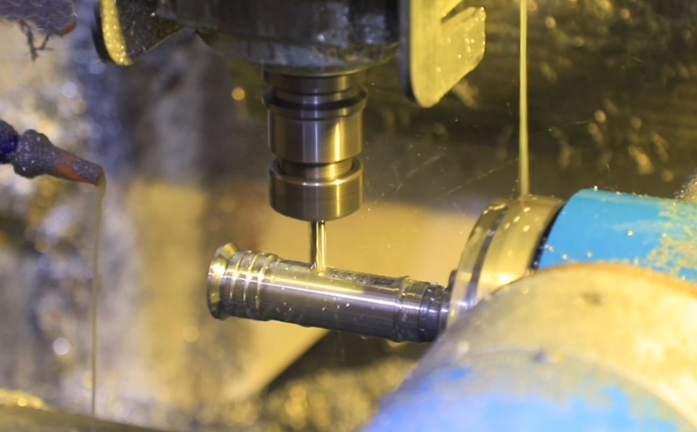Aluminum flashlights have become increasingly popular due to changing times. They offer essential convenience and improved aesthetics through CNC machining. Utilizing CNC machining for the aluminum flashlight shell brings numerous advantages, such as personal customization options and various surface treatments. For detailed information, CNCJY, based on their manufacturing experience, provides a comprehensive guide, making it invaluable when you’re looking to make a purchase.

What Are the Common Metal Materials for Aluminum CNC Machining of Flashlight Shells
The common metal materials for aluminum CNC machining flashlight shells are typically different grades of aluminum alloys. Some popular choices include:
-Aluminum 6061: This is a versatile and widely used aluminum alloy known for its good strength-to-weight ratio, excellent machinability, and corrosion resistance.
-Aluminum 7075: This alloy is known for its high strength, making it suitable for applications requiring durability and resistance to stress. It is commonly used in aerospace and high-performance applications.
-Aluminum 5052: This alloy offers good formability and corrosion resistance, making it suitable for applications where aesthetics are important. It is often used in consumer electronics and decorative components.
-Aluminum 6063: This alloy is known for its extrudability, making it ideal for complex shapes and profiles. It is commonly used for architectural and decorative applications.
What Does The CNC Machining Flashlight Shell Include
The CNC machining of a flashlight shell typically involves the following components and features:
1. Body: The main cylindrical or tubular structure that houses the flashlight’s components and batteries. It is often precision machined to provide a precise fit and proper alignment of internal components.
2. Threads: External or internal threads are machined into the flashlight body to facilitate the attachment of end caps, heads, or other accessories. Threads ensure secure and reliable connections.
3. Openings/Cutouts: CNC machining creates openings or cutouts in the flashlight body for switches, buttons, charging ports, and LED emitters. These features allow for user interaction and functionality.
4. Heat Dissipation Structures: CNC machining may incorporate heat dissipation structures, such as fins or grooves, to help dissipate heat generated by the LED emitter and prevent overheating of the flashlight.
5. Surface Finishing: CNC machining can provide surface finishing options such as polishing, anodizing, or coating to enhance the appearance, durability, and corrosion resistance of the flashlight shell.
6. Customization: CNC machining allows for personalized customization options, enabling the inclusion of specific designs, logos, or patterns on the flashlight shell according to the user’s requirements.
What Are the Advantages of Using Aluminum Alloy Machining Flashlight Housing
Aluminum alloy machining for flashlight housing provides benefits such as lightweight construction, strength, durability, corrosion resistance, thermal conductivity, machinability, aesthetic options, and recyclability, making it a preferred choice for many flashlight manufacturers and users. Using aluminum alloy machining for flashlight housing offers several advantages:
-Lightweight: Aluminum alloys are lightweight compared to many other metals. This makes the flashlight easier to carry and handle, especially for extended periods or in situations where weight is a consideration, such as outdoor activities or emergency situations.
-Strength and Durability: Aluminum alloys possess good strength-to-weight ratios, providing durability and resistance to impacts and harsh environments. They can withstand rugged use and provide reliable performance over time.
-Corrosion Resistance: Aluminum alloys naturally form a protective oxide layer, which renders them highly resistant to corrosion. This makes aluminum alloy flashlight housings suitable for outdoor or wet environments where exposure to moisture or other corrosive elements may occur.
-Excellent Thermal Conductivity: Aluminum alloys have excellent thermal conductivity, allowing them to efficiently dissipate heat generated by the flashlight’s components. This helps prevent overheating and ensures optimal performance.
-Machinability and Precision: Aluminum alloys are known for their excellent machinability, meaning they can be easily shaped, cut, and precision-machined to create intricate designs and precise dimensions. This allows for customized flashlight housing with specific features or patterns.
-Aesthetic Options: Aluminum alloy flashlight housings can be further enhanced with various surface finishes, such as anodizing or powder coating. These finishes offer a wide range of color options, improved scratch resistance, and improved aesthetics. -Recyclability: Aluminum alloys are highly recyclable, making them environmentally friendly. They can be melted down and reused, contributing to sustainability and reducing waste.